Most 1974 Kennedy half dollars are worth face value ($0.50), but rare errors can fetch hundreds. Philadelphia (no mint mark) and Denver “D” coins typically range $1-$3 in circulated condition. The valuable 1974-D Doubled Die Obverse variety can command $11-$775+ depending on condition. San Francisco “S” mint marks were produced only for collectors. Common errors include clipped planchets and struck-through grease ($5-$10), while significant doubled die obverse errors on both mints can reach hundreds of dollars. Rare “No FG” varieties may be worth thousands in top condition.
That 1974 Kennedy half dollar sitting in your change jar might be worth more than fifty cents. While most examples trade at face value, specific varieties and error coins can fetch anywhere from a few dollars to several hundred dollars. Understanding which mint marks, errors, and conditions to look for transforms casual pocket change into a profitable numismatic pursuit.
Understanding the 1974 Kennedy Half Dollar Production
The United States Mint produced Kennedy half dollars at three facilities in 1974. Philadelphia struck coins without mint marks, totaling 201,596,000 pieces. Denver added a “D” mint mark to their 79,066,300 coins. San Francisco exclusively produced proof specimens bearing the “S” mint mark for collectors, with a mintage of 2,612,568 pieces.
These coins contain no silver, unlike their 1964 predecessors. The 1974 version consists of copper-nickel clad composition with a pure copper core, making them purely collectible based on condition and rarity rather than precious metal content. This compositional change significantly impacts baseline values.
The obverse features Gilroy Roberts’ profile of President John F. Kennedy, while Frank Gasparro designed the reverse showing the Presidential Seal. Gasparro’s initials “FG” appear on the reverse near the eagle’s tail feathers, an important detail when identifying certain error varieties.
No Mint Mark Philadelphia Coins: Values and Characteristics
Philadelphia-minted 1974 half dollars display no mint mark on the obverse. With over 201 million struck, these represent the most common variety. Worn examples circulating through commerce remain at face value of fifty cents.
Lightly circulated pieces in Good to Fine condition trade between one dollar and one dollar forty cents. The slight premium reflects collector demand for date completion rather than scarcity. Coin dealers typically pay face value for heavily worn examples.
Uncirculated specimens showing no wear on Kennedy’s cheekbone and hair details command approximately one dollar fifty cents. Gems grading Mint State 65 or higher can reach three to five dollars, though these constitute a small fraction of surviving examples. Most Philadelphia strikes show bag marks and contact wear from mass production and release into circulation.
| Grade | Value Range |
|---|---|
| Good to Fine (Circulated) | $1.00 – $1.40 |
| About Uncirculated | $1.40 – $1.50 |
| MS-60 to MS-63 | $1.50 – $3.00 |
| MS-65+ | $3.00 – $5.00 |
Denver Mint “D” Coins and the Valuable Doubled Die Variety
Standard Denver strikes marked with “D” on the obverse near Kennedy’s truncation follow similar value patterns. Circulated examples trade around one dollar, while uncirculated pieces reach approximately one dollar sixty cents according to established pricing guides.
The 1974-D Doubled Die Obverse transforms this common coin into a significant find. This variety shows dramatic doubling on “LIBERTY,” “IN GOD WE TRUST,” and the date. Under magnification, letters appear twice with clear separation visible to the naked eye on strong examples.
Authentication remains critical because common machine doubling or die deterioration doubling creates confusion. True doubled dies result from hub impressions offset during die creation, producing distinct, flat doubling across devices. Machine doubling appears raised and shelf-like.
Values for authenticated 1974-D Doubled Die Obverse coins start around eleven dollars for heavily worn examples. Extremely Fine specimens trade between fifty and one hundred twenty-five dollars. Uncirculated examples command two hundred fifty to four hundred dollars. Exceptional gems certified MS-65 or higher have sold for six hundred to seven hundred seventy-five dollars at major auctions including Heritage Auctions sales in 2022 and 2023.
| 1974-D Doubled Die Grade | Value |
|---|---|
| Good to Very Good | $11 – $25 |
| Fine to Very Fine | $35 – $75 |
| Extremely Fine | $100 – $125 |
| About Uncirculated | $150 – $225 |
| MS-60 to MS-63 | $250 – $400 |
| MS-65+ | $600 – $775+ |
San Francisco Proof Coins for Collectors
San Francisco produced only proof coins in 1974, not business strikes for circulation. These coins received special treatment including polished dies and hand-selected planchets, creating mirror-like fields and frosted devices.
Collectors purchased these directly from the United States Mint in protective packaging. The 2.6 million mintage represents intentional production for numismatists rather than accidental survival from circulation. This distinction affects both availability and pricing.
Standard 1974-S proofs in original government packaging grade Proof-65 to Proof-67 and trade between five and twelve dollars. Deep Cameo specimens showing strong contrast between mirrors and frost command fifteen to thirty dollars. Perfect Proof-70 examples certified by major grading services reach seventy-five to one hundred fifty dollars.
Collectors seeking complete Kennedy half dollar sets include proof examples, sustaining steady demand. Unlike circulation strikes valued primarily for errors, these coins derive worth from pristine condition and eye appeal.
Identifying Valuable Error Varieties
Manufacturing errors create premium value on otherwise common coins. Clipped planchets occur when the metal strip feeding the blanking press overlaps, cutting incomplete circular blanks. Straight clips appear as missing crescents along the edge, while curved clips follow the adjacent blank’s outline.
Size determines value on clipped planchet errors. Minor clips removing five to ten percent of the planchet trade for five to eight dollars. Significant clips eliminating twenty-five percent or more reach fifteen to thirty-five dollars depending on dramatic visual impact and remaining detail preservation.
Struck-through-grease errors happen when debris accumulates in die recesses, preventing metal flow during striking. Letters, dates, or design elements appear weak, filled, or missing entirely. Minor grease-filled letters add three to eight dollars value. Extensive obscuring covering major design elements commands ten to twenty-five dollars.
The “No FG” variety shows missing designer initials on the reverse. This results from excessive die polishing removing shallow details. While technically an error, the subtle nature limits premiums to five to fifteen dollars for typical examples. Exceptional uncirculated specimens with completely absent initials have reached several hundred dollars at specialized error coin auctions.
Off-center strikes showing design elements shifted reveal blank planchet areas. Minor off-center errors of five to ten percent add eight to twenty dollars. Dramatic strikes off-center by thirty to fifty percent while retaining complete dates command one hundred to three hundred dollars. Certification by PCGS or NGC authenticates these errors and typically increases values fifteen to twenty-five percent.
Grading Impact on 1974 Half Dollar Values
Professional grading transforms common coins into certified collectibles. Third-party services including Professional Coin Grading Service and Numismatic Guaranty Company authenticate, grade, and encapsulate coins in tamper-evident holders. This certification costs fifteen to thirty-five dollars per coin but provides market confidence.
The Sheldon Scale rates coins from 1 to 70. Circulated grades run from Good (G-4) showing heavy wear through About Uncirculated (AU-50 to AU-58) with slight friction on high points. Mint State designations from MS-60 to MS-70 indicate no circulation wear, with higher numbers reflecting fewer contact marks and better luster.
Standard 1974 Philadelphia and Denver half dollars rarely justify grading costs unless reaching MS-66 or higher. Error varieties and the 1974-D Doubled Die benefit significantly from certification. Authentication eliminates buyer concerns about alterations or misattribution, expanding the potential market.
A raw 1974-D Doubled Die might sell for one hundred fifty to two hundred dollars based on photographs. The identical coin certified MS-64 by PCGS with guaranteed authenticity commands three hundred fifty to four hundred fifty dollars. This premium exceeds grading costs and provides liquidity advantages when selling.
Where to Sell 1974 Half Dollars for Maximum Value
Local coin shops offer immediate payment but typically pay wholesale prices. Expect forty to sixty percent of retail value on common examples, with better percentages on verified errors. Dealers need profit margins and face overhead costs that reduce purchase prices.
Online marketplaces including eBay provide direct access to collectors. Sellers achieve seventy-five to ninety percent of market value but face listing fees, payment processing charges, and shipping costs. High-quality photographs and accurate descriptions prove essential for maximizing bids.
Heritage Auctions, Stack’s Bowers, and Great Collections specialize in numismatic material. Consignment typically requires minimum values of five hundred to one thousand dollars, making them suitable for certified Doubled Die varieties or exceptional error coins. Auction houses charge ten to twenty percent seller fees but access serious collectors paying premium prices.
Coin shows connect sellers with multiple dealers and collectors simultaneously. Regional shows occur monthly in major cities, while national conventions happen several times yearly. Bringing certified coins to shows allows comparison shopping across dealers and direct negotiation without online intermediaries.
For common circulated examples worth one to three dollars, spending time and fees selling individually makes little sense. Accumulate quantities and sell as date lots, or simply spend them at face value while searching for valuable varieties.
You may be interested:
- 1859 Indian Head Penny Coin Value Complete Errors List And No Mint Mark Worth Guide For Collectors
- 1911 V Nickel Coin Value Guide Complete Errors List And No Mint Mark Worth Today
- 1902 Dime Coin Value Complete Errors List With O S And No Mint Mark Worth Guide
- 1788 Quarter Coin Value Complete Guide Errors List And D S P Mint Mark Worth Revealed
- 1776 To 1976 Bicentennial Half Dollar Coin Value Complete Errors List And What Your D S And No Mint Mark Coins Are Actually Worth
- 1990 Penny Coin Value Errors List How D S And No Mint Mark Pennies Are Worth Thousands Of Dollars

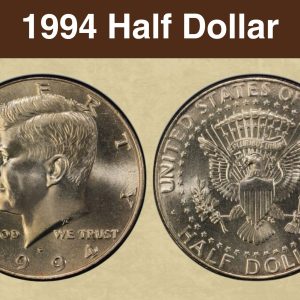
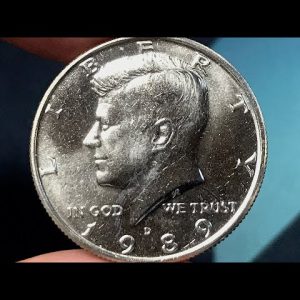
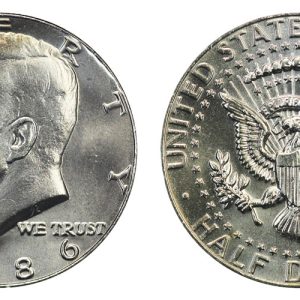
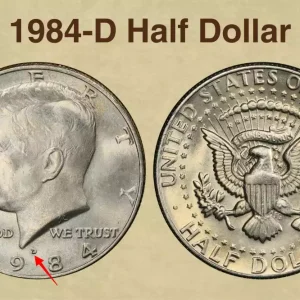
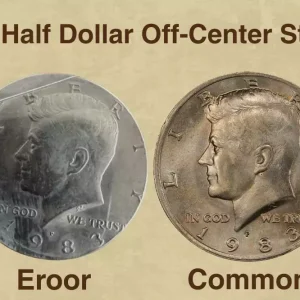
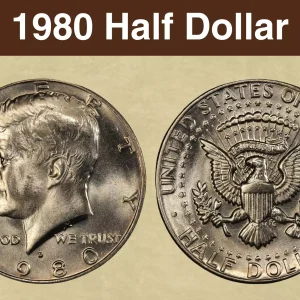
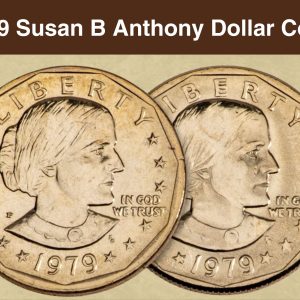
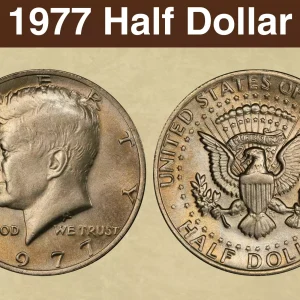
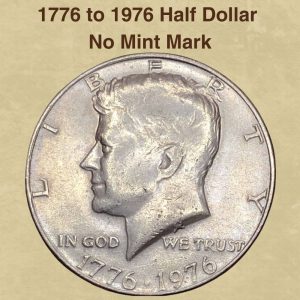
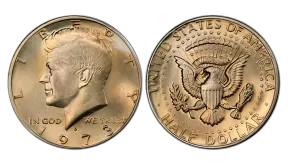
How much is a 1974 half dollar worth with no mint mark?
A 1974 Kennedy half dollar with no mint mark is generally only worth its face value of 50 cents, as millions were minted in Philadelphia and they are very common. However, a rare error version of this coin, such as one with a doubled die or other errors, could be worth more to collectors, ranging from a few dollars up to higher amounts depending on the specific error and condition.
What is the error on the 1974 half dollar?
The most notable error on a 1974 half dollar is a doubled die obverse (DDO), primarily found on the Denver mint (1974-D) coins, where lettering like “TRUST” and “LIBERTY” appears doubled. Other errors include weak or missing “FG”, struck-throughs (from grease or wire), and clipped planchets. A rarer error is a half dollar struck on the wrong planchet, like a smaller nickel or a different coin.
What is the error on the 1974 dollar coin?
One popular and exceedingly rare 1974 silver dollar error is often known as the “ silver planchet Ike dollar.” These coins were mistakenly struck on the silver planchet used to make San Francisco’s silver Ike dollars.
Why is the 1974 Kennedy half dollar rare?
A 1974 half dollar is not rare because over 200 million were minted and they are made of a copper-nickel clad composition, not silver. However, a 1974 half dollar can be rare and valuable if it is in extremely high grade (MS67 or higher) or has a rare minting error, such as a double die reverse.